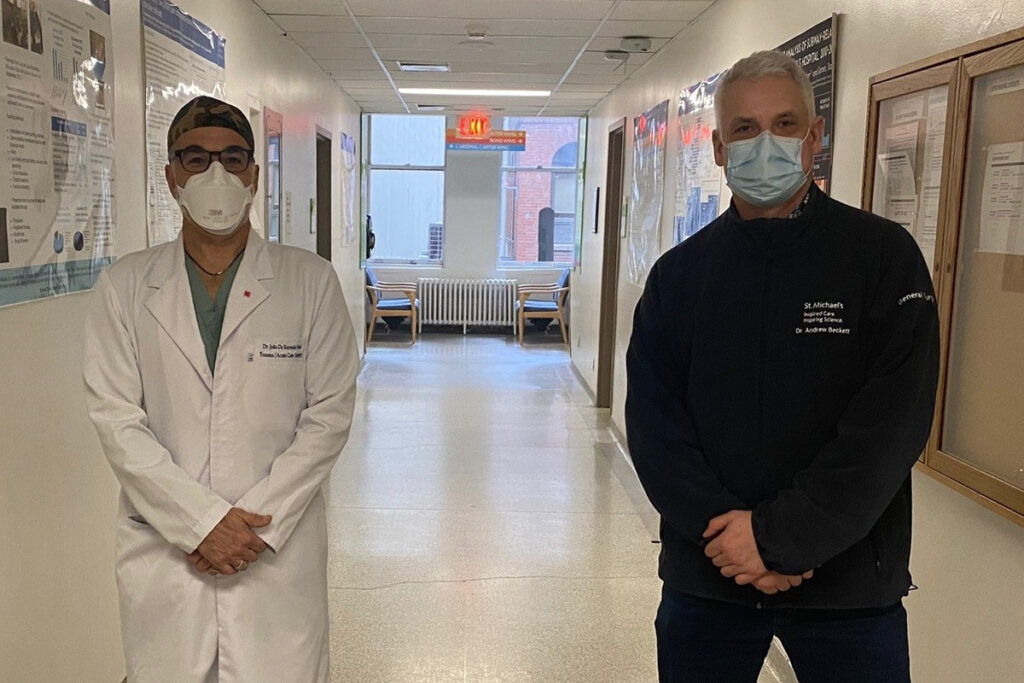St. Michael’s Hospital first Canadian hospital to use new device to advance trauma care for patients

St. Michael’s Hospital is the first health-care institution outside of the United States to use a new, innovative device to advance trauma care for patients experiencing severe hemorrhaging.
St. Michael’s was selected to become a REBOA Centre of Excellence and implement this device in its emergency department and trauma program. This month, the team successfully applied the device for a seriously injured patient.
“One of our aims in the Trauma Program at St. Michael’s is to build the trauma centre of the future,” said Dr. Andrew Beckett, Medical Director of the Trauma Program at St. Michael’s. “Implementing new innovative devices like this is a major advancement in trauma surgery and trauma care because it allows us to use a more minimally invasive technique to control internal bleeding without necessarily risking ischemia to the kidneys and the legs.”
The pREBOA-PRO catheter, a tool developed by Prytime Medical Devices, allows trauma and critical care teams to control blood flow and manage serious blood loss in the abdomen while ensuring that there remains adequate blood supply to a patient’s legs, kidneys and bowels. This technique, known as partial REBOA, has emerged as an advancement to the REBOA process.
REBOA means Resuscitative Endovascular Balloon Occlusion of the Aorta, which is a process that involves the placement of an endovascular balloon in the aorta to control hemorrhaging in trauma victims. The aorta is the main artery that carries blood away from the heart to the rest of the body.
When a patient is admitted to the hospital with massive bleeding in the abdomen or pelvis, trauma care teams may insert a specialized catheter device up the femoral artery, which is a blood vessel located in the upper thigh, and then into the aorta where a balloon is inflated to stop all bleeding.
Prior to the introduction of the pREBOA-PRO catheter, older generations of this device would completely occlude or block the aorta. Although extremely effective in stopping the patient from bleeding out, this process can result in a lack of blood supply to a patient’s legs, bowels and sometimes even to the kidneys. Now, with the development of this new catheter, care teams can prevent the lack of blood flow to these areas in the body using the partial REBOA technique.
This application marked a significant moment in St. Michael’s journey to improve trauma care for patients. Along with the ability to control blood flow and allow areas like the kidneys and legs to receive adequate blood supply, this new catheter also allows teams to leave the balloon up for much longer in comparison to previous generations of the device. This advantage can translate well in settings where extra time is needed to transport a seriously injured patient to the hospital.
“St. Michael’s is leading the way on creating a trauma system of tomorrow by using this type of partial REBOA technology,” said Beckett. “This device combines specialized technology, team training and advanced skill sets that will help improve the care we provide our patients moving forward.”
By: Jessica Cabral
